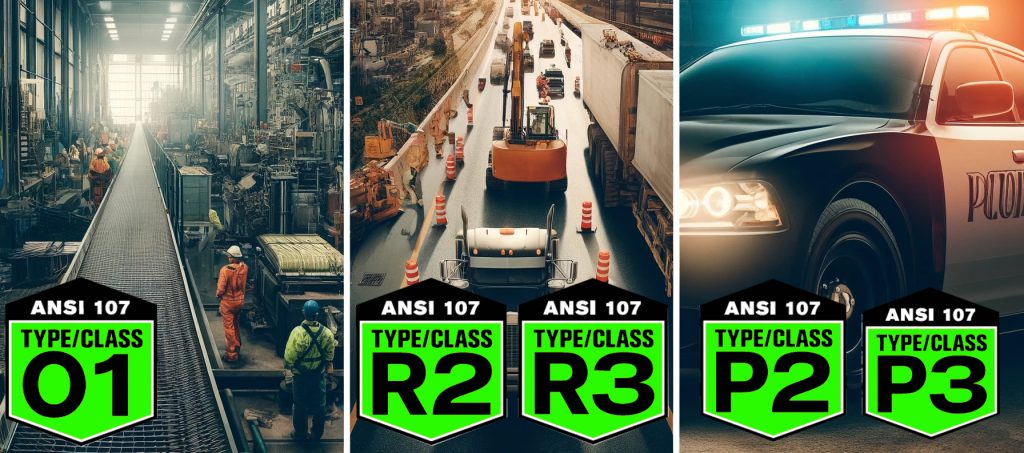The Federal Highway Worker Visibility Rule is a regulation implemented by the Federal Highway Administration (FHWA) to ensure the safety of highway workers. This rule, found in 23 CFR Part 634, mandates that all workers within the right-of-way of a Federal-aid highway who are exposed to traffic or construction equipment must wear high-visibility safety apparel. The purpose of this rule is to reduce the risk of accidents and injuries by making workers more visible to drivers and equipment operators.
Garment Types
Three types of high-visibility safety apparel (HVSA) help users select the appropriate options based on their work environment. These types are further divided into Classes 1, 2, and 3.
- Type “O” Garments:
- Description: Designed for occupational workers not required by the MUTCD 2009 edition to wear HVSA, but who may work in environments with moving equipment or vehicles and associated struck-by hazards, where visibility is a concern.
- Class Options: Only Class 1 is available for Type “O” garments.
- Type “R” Garments:
- Description: Intended for workers exposed to roadway traffic and environments with moving equipment or vehicles. This type and its classes comply with federally mandated PPE requirements per the MUTCD 2009.
- Class Options: Includes Classes 1, 2, and 3, specifying different levels of visibility.
- Type “P” Garments:
- Description: Provides additional options for fire, police, and EMS personnel who face unique hazards requiring access to equipment on their person. The main difference from Type “R” garments is in the background material requirements.
- Class Options: Similar to Type “R” but tailored for public safety needs.
These three HVSA classes guide users and employers in selecting the appropriate garments based on expected work environment risks. The classes specify the minimum amount of background and retroreflective material, the placement of retroreflective material, and technical requirements for garment design.
ANSI Classes of High-Visibility Apparel
The American National Standards Institute (ANSI) has established three classes of high-visibility safety apparel, which are defined based on the level of visibility and the type of work environment:
- Class 1:
- Description: Class 1 garments provide the minimum level of visibility and are intended for workers who have a low risk of being struck by vehicles or equipment.
- Typical Use: Ideal for workers in environments where traffic does not exceed 25 mph, such as parking lot attendants, delivery vehicle drivers, and warehouse workers.
- Requirements: Garments must have a minimum of 217 square inches of reflective material.
- Class 2:
- Description: Class 2 garments offer a higher level of visibility than Class 1 and are suitable for workers who are exposed to traffic or equipment that exceeds 25 mph.
- Typical Use: Commonly used by highway and road construction workers, survey crews, emergency responders, and utility workers.
- Requirements: Garments must have a minimum of 755 square inches of background material and 201 square inches of reflective material.
- Class 3:
- Description: Class 3 garments provide the highest level of visibility and are designed for workers in high-risk environments where they need to be highly visible from a greater distance.
- Typical Use: Suitable for workers in environments where traffic exceeds 50 mph, such as highway maintenance workers, flaggers, and tow truck operators.
- Requirements: Garments must have a minimum of 1240 square inches of background material and 310 square inches of reflective material.
These ANSI classes help ensure that workers wear the appropriate level of high-visibility apparel based on the specific risks of their work environment.

